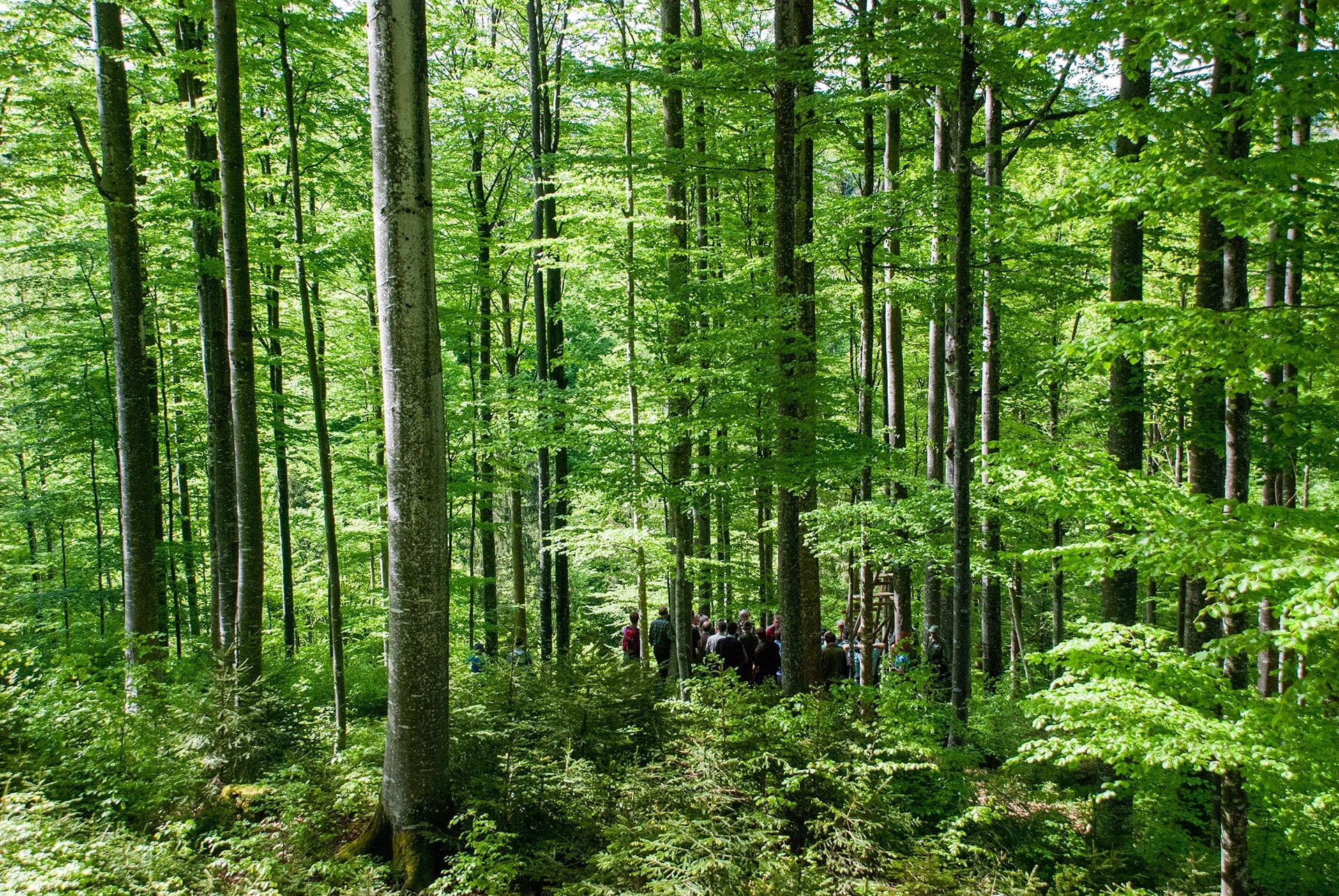The EU Green Deal, Biodiversity and Forests: Ingredients for Success
Our future relies on sustainably managed, resilient forests. The EU Green Deal is an opportunity to preserve biodiversity while realizing the major role European forests play in Europe’s new growth strategy to achieve a fair and prosperous society and resource-efficient, competitive economy – void of net greenhouse gas emissions by 2050. Meeting these objectives can only be achieved if policymakers follow a holistic approach to forest management.
The people behind the forests
European forests are not only trees, but entire ecosystems providing many different services beneficial to our environment, economy and social life. But before talking about forests and their benefits, we must first begin with a basic but important fact: forest management does not happen by itself – there are people behind forests. Meet them, as they live, breathe and grow with the resource they hold so dear. As forest caretakers, it is essential that policymakers acknowledge their important role and secure their motivation.
The focus of European forest owners and managers is to maintain and enhance healthy, vital forest ecosystems, which continue to provide a diverse spectrum of goods and services to society. This is achieved by balancing the multiple aspects of forestry through implementing the concept of multi-functionality and sustainable forest management (SFM) – a concept widely defined according to criteria and indicators developed and agreed at pan-European level during the Ministerial Conference on the Protection of Forests in Europe. Exercised in daily management practices by forest owners across Europe, SFM principles ensure that our forests provide relevant services and will continue to do so in the future. Forest owners are also the ones making the management decisions and taking on the responsibility of all consequences related to these decisions.
In times when forests are gaining more attention in the EU and globally, the human dimension matters even more when we observe the private forest ownership structure in the pan-European region.
Firstly, private forest ownership, which mainly refers to small-scale forest owners, is subject to vast and diverse patterns, leading to multiple ways to manage forests today. The UNECE/ FAO report of 2018 provides useful insights into better understanding this situation, confirming that for the European private ownership today, fragmentation and parcellation are a challenge. The average size of a private forest holding in the EU is about 13 hectares. However, approximately two-thirds of the 16 million private forest owners – covering 60% of the EU forest area – have holdings of less than 3 hectares. The heterogeneity of forest owners spans culture, origin, age, gender, and values. Despite this, forest owners have a common objective – caring for their forests, preserving them and optimizing their use to pass on their forests to future generations. To this aim, forests are managed in the best possible way, taking into account their local environment and following national and regional legislations that encompass SFM principles.

Secondly, secured and acknowledged property rights are key to guarantee a long-term commitment and sound, sustainable land management by forest owners, adding to the prosperity and diversity of Europe’s landscape.
In this context, when dealing with forest-relevant issues, the current and future EU policy framework should always recognize the achievements done so far and consider forest owners’ possibilities and motivation to manage their forests and to gather their strengths in the future. Forest owners’ early involvement in the various policy processes is therefore essential to make EU forest-related policies a success.
Biodiversity conservation and enhancement as an integral part of sustainable forest management
SFM encompasses three inseparable dimensions of the forest: economic, social and environmental. The latter includes principles that work towards the objective of biodiversity conservation and enhancement. Only by attentively enabling functioning ecosystems, forest owners will be able to ensure long-term management of their forests. This makes sense, as forests are irreplaceable reservoirs of more than 15 ecosystem services, biodiversity being one of them. They also provide wood-based materials and non-wood forest products, carbon sinks and clean water through filtration. They clean the air, prevent soil erosion and play a central role in risk reduction measures vis-à-vis natural disasters, such as floods, droughts, heatwaves, erosion or landslides. They also support outdoor leisure, recreation, spiritual values and cultural services, particularly in densely populated areas, and provide economic and job opportunities to local communities, contributing to vibrant rural areas.
The EU Biodiversity Strategy to 2030 needs to enable and acknowledge multifunctional forests and all the ecosystem services they provide. This requires a holistic and balanced approach to forest management as well as realistic and implementable policy environment.
Essential for the conservation of Europe’s biodiversity, forests protected under Natura 2000 include various types of semi-natural habitats. Most of them are characterized by a long history of forest management. Needless to say, forest ecosystems are bound to dynamic and long-term processes in nature and require legislative certainty and sustainability of long-term investment for their management.
The EU’s ambition to lead globally on the next steps to curtail the global biodiversity loss will be translated in the coming EU Biodiversity Strategy to 2030 as part of the European Green Deal. Considering the many indispensable services that forests supply, the future EU initiative on biodiversity needs to be done right – as an enabling strategy that acknowledges multifunctional forests and encompasses adequate tools.
Biodiversity preservation at the cross road of climate change mitigation and adaptation
Current EU policy discussions highlight the question on how climate change mitigation and biodiversity preservation can go hand-in-hand.
On one hand, Europe’s forests are vital for mitigating climate change through providing three main climate benefits: CO2 sequestration in resilient, growing forests; carbon storage in wood products; and substitution of fossil-based materials and fuels with a renewable and climate-friendly raw material. In this view we talk about the three S’s: sequestration, storage and substitution. Forest ecosystems work in a green carbon cycle, and SFM is crucial in maintaining and enhancing this car-bon cycle. Biodiversity preservation enables forests to remain healthy and is therefore a condition for forests to deliver on these benefits.
On the other hand, forests are seriously affected by changing climatic conditions, which limits their mitigation potential and increases their potential emissions. This not only represents a serious danger for the climate change mitigation, biodiversity and environment conservation, but is also a threat for human life and the viability of rural areas. The occurrence of natural disturbances such as fires, storms, pest and disease outbreaks, extended drought periods and heatwaves are increasingly reported by forest owners and are projected to further increase due to climate change. Sustainable, adaptive forest management represents a solution to counteract the negative tendencies, preserves biodiversity and improves the resilience of our forests to changing climatic conditions which enables higher carbon sequestration and as such, provides more primary material to substitute carbon-intensive materials and energy.

The future is not one-size-fits-all
The EU is home to a wide variety of forest ecosystems, each with their respective challenges including a growing intensity of various climate change-induced threats. Forests need to remain managed and adapted according to the national and local conditions and so should the EU commitments and measures, based on a bottom-up approach, in order to take into account relevant specificities of each Member State.
To develop an ambitious, yet realistic, EU2030 Biodiversity Strategy, previous achievements in national biodiversity conservation should be considered. In view of the challenges linked to the practical implementation of the existing and future EU legal and policy framework on biodiversity, it is important to underline the need for a participatory planning and implementation, appropriate financing and flexibility on national and local levels. Most importantly, realistic definitions and the level of ambition of the targeted instruments and appropriately funded measures on biodiversity expected in 2021 will be key for the endorsement and involvement of forest owners. Valuable to the process will be a final outcome of the evaluation of the current Biodiversity Strategy which should disclose successes and failures in the implementation of the Biodiversity Strategy to 2020 and recognize the challenges we have faced during this period.

In the coming months, the European Commission will start working on the EU Forest Strategy post-2020. Forest issues are fragmented across many different areas and sectors, among others as part of agricultural, environment, climate and industrial policies, and thus require a robust framework for a consistent and well-coordinated action at EU-level. A revised EU Forest Strategy post-2020 should, therefore, serve as the cornerstone to address holistically the many cross-cutting challenges of the forest sector, including biodiversity, with SFM to be given a key role in this policy landscape.
Facts about European forests
- 182 million hectares (42% of EU land area) are covered by forests
- Over the last 25 years, forests have grown by 9 million hectares, the size of Portugal
- 60% of forests are privately owned by nearly 16 million forest owners
- 90% of timber supplied to the EU wood industry originates from EU forests
- 50% of Natura 2000 network area is forest
- 90% of forests are available for recreational purposes
Especially in times of changing climatic conditions that impact our forests severely, we would like to encourage you to see the forests and all related initiatives in a coherent, holistic and balanced way. In these very crucial times for the forests in Europe, the Confederation of European Forest Owners is looking forward to further collaborate and seek synergies with partners as well as contribute to the next step of all processes related to forests and biodiversity.